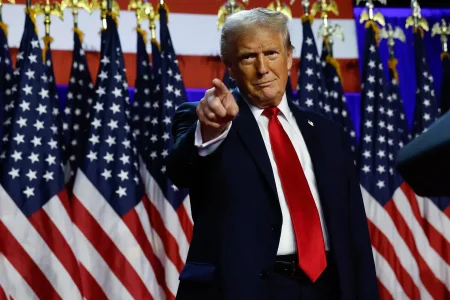China Signals Massive Stimulus, Boosting Asian Markets Amid Holiday Trading
Asian equity markets closed predominantly higher on Christmas Eve, driven by strong performance in Hong Kong and mainland China, despite light trading volumes due to holiday closures in several markets, including Australia and the Philippines. Hong Kong and Singapore observed half-day trading sessions. The surge in Chinese markets came on the heels of a report by Reuters, citing unnamed sources, that China plans to issue a substantial RMB 3 trillion in special purpose bonds, exceeding the anticipated RMB 1 trillion. This announcement, particularly significant as it was released after the Hong Kong market closed, was interpreted by investors as a concrete sign of China’s commitment to stimulating consumption, a long-awaited move by foreign investors. The news fueled a rally, pushing the Hang Seng Index above the 20,000 mark, with growth stocks leading the charge on robust volumes, even for a half-day session.
Reinforcing the stimulus narrative, mainland Chinese media extensively covered the conclusion of the National Financial Work Conference (NFWC) and a subsequent release by the Ministry of Finance (MoF). The MoF emphasized the implementation of “more proactive fiscal policies,” outlining six key areas of focus for 2025. Crucially, the first and most prominently highlighted area was "support the expansion of domestic demand." This prioritization, visually emphasized in the MoF’s release, signals a clear intention to bolster consumption. The MoF highlighted plans to expand pension and medical insurance programs, addressing the high saving rate in China, which is largely attributed to the lack of a robust social safety net. The overarching aim is to "vigorously boost consumption," injecting much-needed momentum into the economy.
While the Reuters report emerged after the Hong Kong market closed, its connection to the NFWC’s pronouncements strongly suggests that it contributed to the market’s upward trajectory. This is further supported by the substantial influx of capital from mainland investors through the Southbound Stock Connect program. Mainland investors accounted for nearly half of the trading turnover in Hong Kong, injecting $672 million into Hong Kong stocks and ETFs. Alibaba, a clear beneficiary of increased consumption, saw a significant gain of 2.65%. The company also announced a key leadership change, with Liu Zheng taking over as CFO of Ant Group, a move potentially signaling progress toward a long-awaited IPO.
Other major technology players, Tencent and Meituan, experienced marginal declines, but the overall sentiment towards growth stocks remained positive in both Hong Kong and mainland markets. Tencent’s Zhang Jun addressed rumors circulating on WeChat about gifting practices, while Weimob, another internet services company, saw a substantial 31% surge fueled by a broker upgrade. High-yielding mega-capitalization stocks, including banks, energy, and insurance companies, also performed well against the backdrop of a rare down day for Chinese Treasury bonds. The relative attractiveness of equities compared to low-yielding government bonds further contributed to market buoyancy. National Team ETFs saw at or above average trading volumes, indicating broad-based participation in the market rally, with small-cap stocks notably outperforming.
Beyond the immediate market dynamics, the evolving US-China relationship and its potential impact on the global economy remain a key concern. Insights from incoming US Treasury Secretary Scott Bessent, gleaned through recent podcast interviews, suggest a cautious stance on China’s economic prospects. Bessent, whose impressive resume includes stints with prominent investors like Jim Rogers, Jim Chanos, George Soros, and Stanley Druckenmiller, expressed skepticism about the Chinese government’s ability to navigate the current economic challenges, citing President Xi’s focus on social priorities over economic growth. However, China’s recent policy shifts, including the significant pivot towards stimulus measures starting in September, signal a renewed emphasis on economic recovery. The measured approach to stimulus deployment might be influenced by ongoing trade tensions with the US, but the authorities have ample "dry powder" to accelerate stimulus as needed.
The prevailing narrative in Western media, focusing on negative portrayals of China, contrasts sharply with the positive market reactions. Signals from the Trump administration, such as the invitation to Xi Jinping’s inauguration, the absence of a TikTok ban, and the removal of outbound investment restrictions from a Congressional bill, suggest a potential thawing of tensions. These developments, largely overlooked by mainstream media, underscore the complexity of the US-China relationship and the importance of considering multiple perspectives. The Hang Seng and Hang Seng Tech indices continued their upward trajectory, adding to the previous day’s gains, despite lower trading volumes characteristic of the holiday period. Growth and small-cap stocks maintained their outperformance, while sectors like technology, real estate, and energy led the market higher. Southbound Stock Connect flows remained robust, indicative of continued mainland investor interest in Hong Kong equities. Similarly, mainland markets experienced broad-based gains across all sectors, with growth and small-cap stocks outperforming. While trading volumes were down from the previous day, they remained above the one-year average. These trends, alongside the evolving political and economic landscape, will continue to shape market dynamics in the coming weeks.















